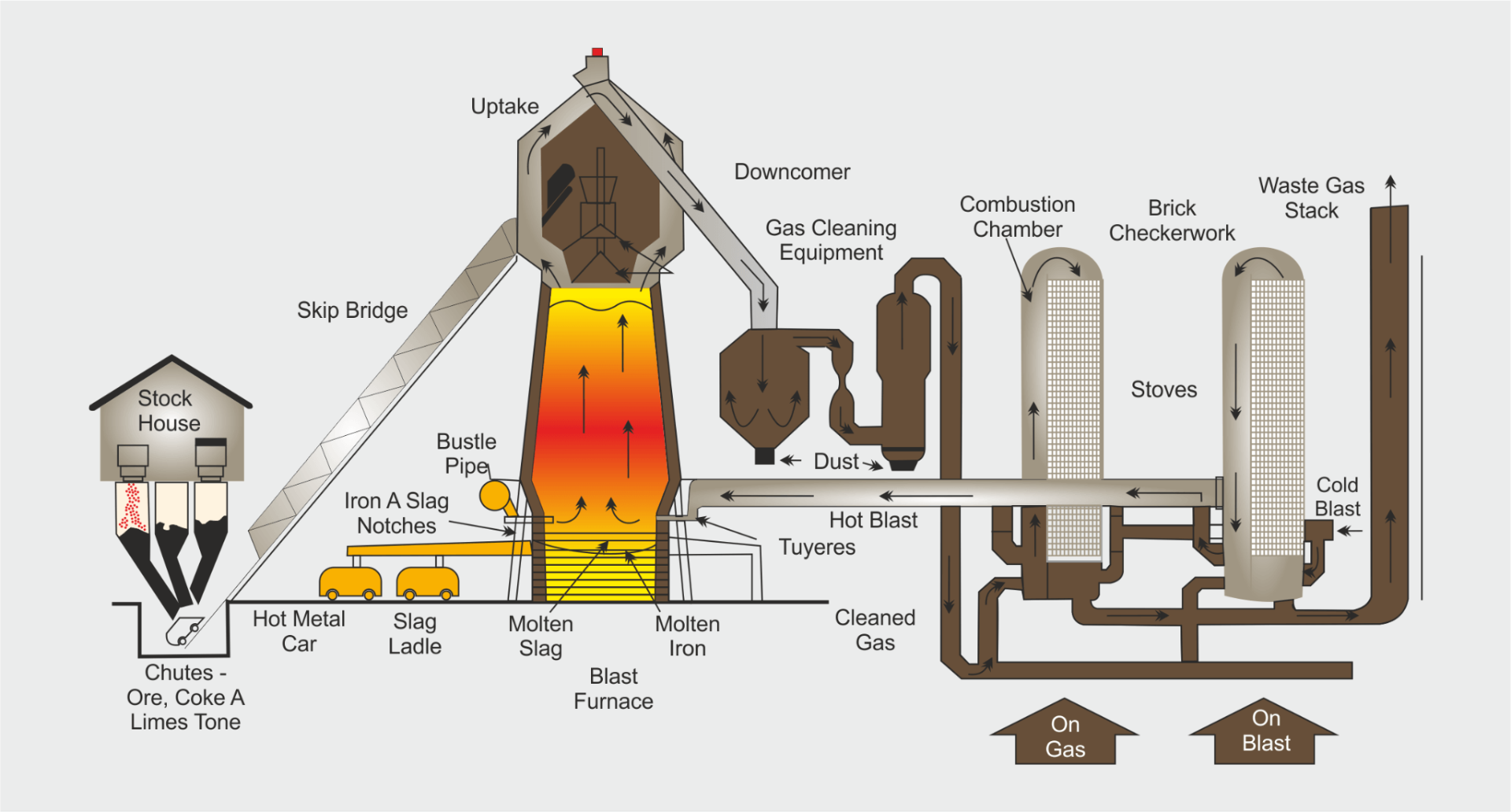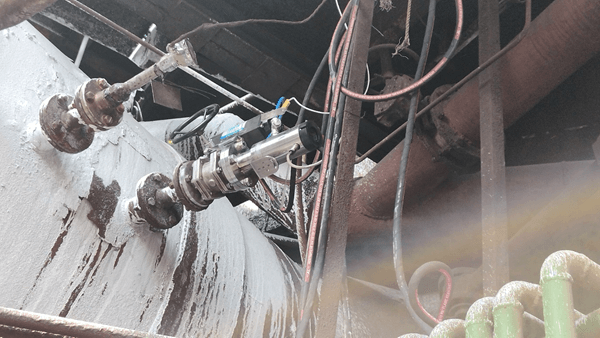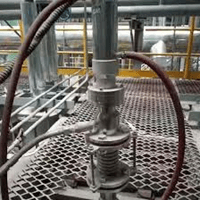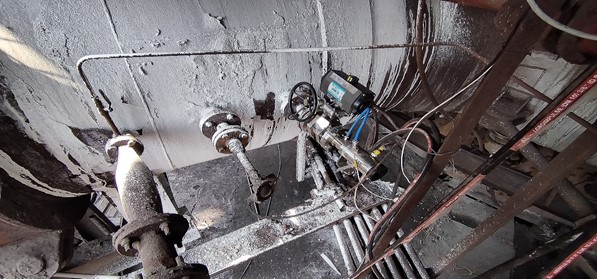- Home
- About
- Products
- Contact Temperature Sensors
- Cables & Wires
- Mineral Insulated Cables
- Nickel & Thermocouple Alloy
- Industrial Heaters
- Heating Cables and Mats
- Non Contact Temperature Sensors
- Industrial and R&D Furnaces
- Temperature Calibrators
-
Circulating Chiller
- Services
-
Special Products
- Thermal Profiling System
- Industries
- Resources
- Contact Us
- Shop
Enhancing Efficiency of Blast Furnace Applications Using Pyrometer
In real time industrial processes, precision and efficiency are paramount. Blast furnaces are central to production of iron and steel, operating under extreme conditions where temperature monitoring is crucial for both safety and productivity.
Understanding Blast Furnaces
Before delving into the application of Pyrometers, it's crucial to grasp the fundamentals of blast furnaces. These towering structures serve as the heart of iron and steel production, where raw materials such as iron ore, coke, and limestone are transformed into molten metal. The process involves intense heat, typically exceeding 1500°C (2732°F), generated by combusting coke with hot air, creating an environment conducive to metallurgical reactions. The temperature within these furnaces plays a critical role in determining the efficiency and quality of the steel production process. Traditionally, monitoring and controlling furnace temperatures have been challenging, but with advancements in technology, particularly the application of pyrometers, significant improvements have been achieved.

The Role of Pyrometers
Pyrometers, specialized devices for measuring high temperatures without direct contact, play a pivotal role in blast furnace operations. These instruments utilize principles such as radiation detection to accurately gauge temperatures within the furnace chamber. By providing real-time data, Tempsens pyrometers enable operators to monitor and regulate the furnace conditions, ensuring optimal performance and product quality.
Applications in Blast Furnaces


Temperature Monitoring:
Pyrometers continuously monitor the temperature distribution across various zones within the blast furnace, including the stack, hearth, throat and tuyeres. This data allows operators to adjust parameters such as air flow, fuel injection, and raw material feed rates to maintain optimal operating conditions.
Process Control:
Precise temperature measurements are crucial for controlling metallurgical reactions within the furnace. Tempsens Pyrometers provide feedback that guides the injection of hot air, carbon sources, and flux materials, facilitating the desired chemical transformations and maximizing production efficiency.

Safety and Maintenance:
Monitoring temperature gradients and detecting hot spots within the furnace helps prevent equipment damage and potential hazards. Early identification of abnormal temperature fluctuations allows for timely interventions, reducing the risk of equipment failures and ensuring operational safety.
Energy Efficiency:
By optimizing temperature control and minimizing heat losses, Tempsens pyrometers contribute to energy conservation efforts in blast furnace operations. Fine-tuning combustion parameters based on accurate temperature data enhances fuel efficiency and reduces overall energy consumption.
Challenges and Considerations
Calibration and Accuracy:
Pyrometers require periodic calibration to maintain accuracy, especially in harsh industrial environments like blast furnaces. Proper calibration procedures and regular maintenance are essential to ensure reliable temperature measurements.
Environmental Factors:
Factors such as dust, smoke, and vibrations within the furnace environment can impact the performance of pyrometers. Employing robust, industrial-grade TEMPSENS pyrometer solutions designed to withstand these conditions is crucial for reliable operation.
Integration with Control Systems:
Seamless integration of pyrometer data with existing process control systems is essential for leveraging its full potential. Incorporating compatibility with industry-standard communication protocols and data interfaces like RS485 and RS232 Communication, Modbus, etc. are used and provided with compatible software with the Tempsens Pyrometers.
Future Perspectives
As technology advances, the integration of pyrometers with automation and data analytics platforms holds promise for further enhancing blast furnace efficiency. Real-time temperature data, coupled with machine learning algorithms, can enable predictive maintenance strategies and adaptive process optimization, leading to greater productivity and sustainability in the steel industry.
In conclusion, the application of pyrometers in blast furnace operations exemplifies the synergy between technology and metallurgy. These precision Tempsens Make instruments empower operators to navigate the extreme conditions of iron and steel production with confidence, unlocking new levels of efficiency and reliability in the pursuit of excellence.
Solution Provided by Tempsens
The AST A450C+ pyrometer with special cooling and pneumatic actuator arrangement is the most suitable pyrometer for the blast furnace and stove dome application. This specially designed arrangements for such type of application keeping in view the site challenges. Environment being harsh and also ambient temperature being high we suggest special water cooling for safety purpose and long life of pyrometer. This AST A450C+ and accessories has the following features:
- Very fast response time within mille seconds and adjustable as required.
- Wide temperature range (600-2500°C).
- Very useful for harsh and high ambient conditions.
- Inbuilt parameterization key for onsite parameter setting.
- Supplied with a special water cooling jacket, pneumatic actuator and control panel for smooth process and safety of instruments.
- Analog output for automation of processes.
- Laser or through the lens or video model sightling options are available (as required by customer).
For details visit at: https://tempsens.com/catalog/non-contact-temperature-sensors/pyrometers/general-pyrometers/a-plus-series.html



